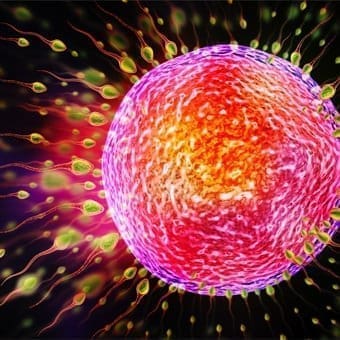Dr. Elkhonon Goldberg is one of those rare scientists who are able to distill complex ideas into accessible, entertaining, and even literary prose. His books “The Wisdom Paradox: How Your Mind Can Grow Stronger As Your Brain Grows Older” and “The New Executive Brain: Frontal Lobes in a Complex World” are as compulsively readable as they are insightful and instructive. Goldberg also runs a clinical practice, is an active researcher, a professor at NYU, and the director of the Institute of Neuropsychology and Cognitive Performance in New York. It is certainly the kind of diverse résumé that Goldberg would endorse for those who wish to keep an active and healthy mind. In addition to contributing to Brain World (see: “Three Prescriptions for a Healthy Brain”), Goldberg also sat down with us to discuss how developments in neuroscience should affect mainstream concepts of health.
Brain World: What do you think is the single most important thing that a person should understand about his or her brain?
Elkhonon Goldberg: How about if I tell you two things? One very important thing that one should understand is that one’s brain is part of one’s physical body. When we think about our ability to breathe, digest, or walk, we understand that these are all functions of our bodies. But when people think about our ability to think, have emotions, or make decisions, they often think as if these were some kind of platonic, ex-corporeal phenomenon, which have nothing to do with our physical being. In reality, they’re functions of our brain, and the brain is a biological entity which is part of our body.
The other thing that’s important is that we are in command of what happens to our brain. Like other organs in our bodies, our brain is very malleable, and depending on what we do — or fail to do — with it, it will be healthy and function well, or it will succumb to the effects of aging or other infirmity and it will not function well. Most people understand that we can go to the gym to change the structure of your body. But relatively few people understand in a deep sense that our mind can also be molded through the nature of our mental activity.

BW: Does that include things like how you eat, or your physical condition, as well as whatever mental exercise you do during the day?
EG: All of the above. Obviously, since thinking is a function of the brain, the most direct impact on the brain is through mental activities. One should not shy away from situations where you strain your brain; one should always be mentally active and engage in new challenges. The rigor of your mental activity has a direct effect on the brain, but so does the nature and extent of your physical activities. It has been shown that a physical, active lifestyle promotes various physiological phenomena that are good for your brain. Nobody’s life should gravitate to excesses. It should be a balanced menu of physical and mental activities.
BW: Do you feel that this is an especially timely moment to be promoting this research?
EG: It’s timely for a variety of reasons. First of all, neuroscience has finally crossed the threshold of being a real science. Thirty or 40 years ago, it was in a prescientific, intuitive state. People had certain ideas and concepts, but there was no rigorous body of methods or knowledge to justify calling it a real science. Now, finally, neuroscience is coming of age into a serious, rigorous science.
Secondly, baby boomers are aging, and there are a lot of them, or I should say us — because I am a member of that generation. It’s a better-educated segment of the population, and, until recently, one could have said it’s a more affluent segment of the population. These people have both the knowledge and the means to engage in these types of self-improvement activities.
Thirdly, there is a growing awareness of various forms of unhealthy brain aging, like Alzheimer’s disease and various dementias — so frankly there is a certain scare factor. Thirty years ago, what were the scare factors? Heart attacks and cancer. They still remain scare factors. People are sufficiently scared to modify their lifestyles to minimize the probability of a heart attack. Now, growing awareness of diseases of the brain have made them yet another scare factor, and to the extent that science can offer certain ways of decreasing the probability of coming down with Alzheimer’s and dementia, people are increasingly interested in these options.
BW: Sure. That would be things like increasing mental reserve and cardiovascular exercise?
EG: Absolutely.
BW: And mental techniques like those you are working on.
EG: Absolutely. And the rationale behind these cognitive training techniques is precisely as I said: in order to be effective, the menu of cognitive exercise has to be diverse. One needs a diverse menu of novel cognitive activities. And one has to make sure that one refreshes one’s menu of mental activities all the time, so that things don’t become staid and stagnant, so that there is always a novelty factor. No single parlor activity like Sudoku or crossword puzzles or anything of that nature meets the requirement of diversity. What these cognitive exercises try to accomplish is a whole fleet of activities, each targeting a particular aspect of cognition, that in combination will cover the whole waterfront.
BW: You were talking about the advances in neuroscience over the past 30 years, and how it’s now a legitimate science. Do you think there’s a parallel to medicine and the discovery of the microscope?
EG: Absolutely. The discovery of the microscope changed our ability to ascertain this micro-world, and the discovery of the telescope changed the face of astronomy. We now have neuroimaging tools which enable us to examine the processes in the brain more directly than was possible before. In that sense, our field has acquired tools comparable to those which have propelled others to maturity in the centuries past. There are other tools that fields like physics have, which our field doesn’t have — the formal mathematical tools which enable a deductive model building. I believe that the development of such tools appropriate to brain research will be the next essential step in neuroscience becoming a truly mature science.
BW: Do you think that in 100 years, people will look upon our time — in the way we care for our brains, the way we treat mental illness, and psychopharmacology — in the same way we now look at medicine before the microscope: cringing at leeches and bloodletting and that sort of thing?
EG: Absolutely. That’s in the nature of history and social societal development. The essence of progress is making things better, and the flipside of that is that when one looks back at the way things were in the past, they often look silly. But one has to realize that they were necessary precursors of today’s progress, and I think it was Newton who said one develops insights by standing on the shoulders of giants. We owe our current progress to the blunders and naiveté of our predecessors decades and centuries ago.
BW: Do you believe in a previously untapped human potential that will be developed the more we understand our brains?
EG: As a general proposition, yes. How it will happen, I don’t know. But it’s a very plausible and certainly a very appealing proposition to entertain.
BW: Should mental fitness training become as popular as physical fitness is?
EG: It will. We are at the threshold of this new trend claiming its place in mainstream culture on par with physical fitness. It hasn’t happened yet, but we are moving in that direction quite rapidly.
BW: Your book “The Wisdom Paradox” is about the mental advantages of aging.
EG: Well, what else do you expect me to say, given that I am already in that age bracket? Am I expected to concede it is all a loss? Of course not. I say that in jest, but in reality the mental advantage of aging is in the accumulation of what I call patterns. Earlier today, a former student of mine called from Detroit. He’s a very prominent neuroscientist in his own right, and he called me for advice about a patient he was having trouble understanding. I gave him an instantaneous response because it immediately resonated with my experience. His case was not exactly like any case I had encountered, but sufficiently close to a number of cases to sufficiently adhere to a general template.
So with age, some of us — not all of us — accumulate a vast library of such templates, which enable us to crack various seemingly thorny mental challenges without much mental effort. Now, I said that some of us develop this mental repertoire. It’s not an automatic benefit of aging. It’s a benefit of the culmination of a life spent in active mental pursuits. If a life is spent drinking beer and not doing much with one’s mind, these patterns will not accumulate. They are a product of mental labors.
BW: There’s a lot of talk these days about neuroplasticity and how we can improve our brains at any age. What do you think the limits of neuroplasticity are?
EG: Well, nobody knows how to quantify it. But you broach an important point. Everything is finite, limited, and up to a point. When people say we can do various things to improve our health, physical well-being and mental well-being, it is always to a point. Beyond a certain point, we are dead. You see what I’m saying? Whatever claims we make, we should always be aware of the finite nature of everything. There are biological finalities that cannot be overturned. But within these finalities, there is enough wiggle room for us to impact through our behavior.
This article was first published in the print edition of Brain World Magazine.








